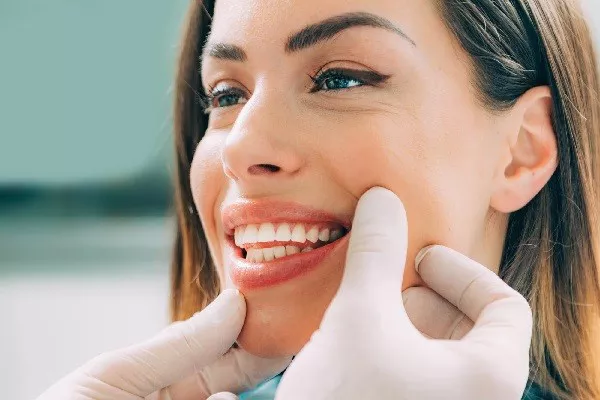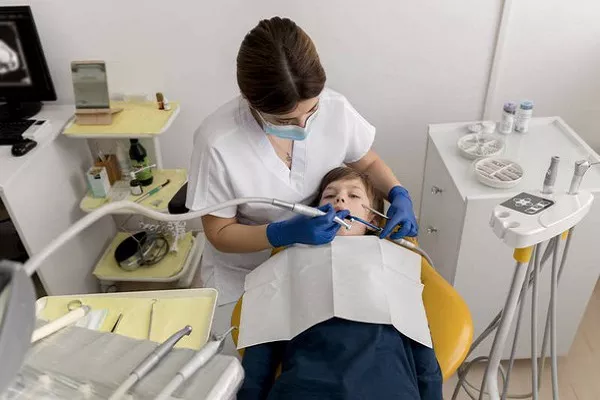Maintaining optimal oral health is a cornerstone of overall well-being, yet the terms “periodontal disease” and “gingivitis” are often used interchangeably, leading to confusion. In this comprehensive article, we unravel the intricacies of these two oral health conditions, exploring their differences, similarities, and the implications for preventive care.
I. Decoding Gingivitis: The Initial Stage of Gum Disease
Defining Gingivitis
Gingivitis is the earliest stage of gum disease, characterized by inflammation of the gums. This condition arises due to the accumulation of plaque—a film of bacteria that forms on teeth surfaces. Gingivitis presents with symptoms such as redness, swelling, and bleeding of the gums, often during brushing or flossing.
Reversible Nature
One crucial aspect of gingivitis is its reversibility. With prompt and effective oral hygiene practices, including regular brushing, flossing, and professional dental cleanings, gingivitis can be halted and even reversed. Failure to address gingivitis, however, can lead to more severe oral health issues.
II. Progressing Beyond Gingivitis: Understanding Periodontal Disease
Advancement to Periodontal Disease
If gingivitis is left untreated, it can progress to a more advanced stage known as periodontal disease. Unlike gingivitis, periodontal disease involves not only inflammation of the gums but also damage to the supporting structures of the teeth, including the bone. Periodontal disease is characterized by the formation of pockets between the teeth and gums, providing a breeding ground for harmful bacteria.
Irreversible Consequences
Unlike gingivitis, periodontal disease often results in irreversible damage. The destruction of bone and connective tissue can lead to tooth mobility and, in severe cases, tooth loss. Managing periodontal disease requires more intensive intervention, including scaling and root planing, antibiotics, and sometimes surgical procedures.
III. Key Differences in Symptoms: Recognizing the Telltale Signs
Gingivitis Symptoms
The symptoms of gingivitis are primarily confined to the gums. Redness, swelling, and bleeding, particularly during oral care routines, are common indicators. Gingivitis may cause discomfort, but the damage is still reversible at this stage.
Periodontal Disease Symptoms
As periodontal disease progresses, the symptoms become more pronounced and extend beyond the gums. Individuals may experience persistent bad breath, receding gums, tooth sensitivity, and even changes in the alignment of teeth. The formation of pockets between the teeth and gums is a distinctive sign of periodontal disease.
IV. Underlying Causes: Unraveling the Roots of Gum Disease
Gingivitis Causes
The primary cause of gingivitis is the accumulation of plaque on teeth surfaces. Poor oral hygiene practices, inadequate brushing and flossing, and irregular dental check-ups contribute to the development of gingivitis. Hormonal changes, such as those during pregnancy or puberty, can also elevate the risk.
Factors Contributing to Periodontal Disease
While plaque accumulation remains a key factor in periodontal disease, additional elements come into play. Genetic predisposition, systemic diseases such as diabetes, and lifestyle factors like smoking can increase the likelihood of developing periodontal disease. The progression from gingivitis to periodontal disease often involves a combination of these factors.
V. Diagnosing and Monitoring: The Role of Dental Professionals
Diagnosing Gingivitis
Gingivitis is typically diagnosed during routine dental check-ups. Dentists assess the health of the gums, looking for signs of inflammation and bleeding. Dental professionals may also evaluate oral hygiene practices and provide guidance on effective preventive care to reverse gingivitis.
Periodontal Disease Diagnosis
Diagnosing periodontal disease involves a more comprehensive assessment. In addition to examining the gums, dental professionals measure the depth of pockets between the teeth and gums, assess tooth mobility, and may use X-rays to evaluate the extent of bone loss. The severity of periodontal disease determines the appropriate treatment approach.
VI. Treatment Approaches: Halting the Progression of Gum Disease
Addressing Gingivitis
The primary focus of gingivitis treatment is to eliminate the underlying cause—plaque accumulation. This involves adopting effective oral hygiene practices, including regular brushing, flossing, and professional dental cleanings. Dental professionals may also provide guidance on lifestyle changes to minimize the risk of gingivitis recurrence.
Managing Periodontal Disease
Treatment for periodontal disease is more complex and often involves multiple interventions. Scaling and root planing, a deep cleaning procedure, aim to remove plaque and tartar from below the gumline. Antibiotics may be prescribed to control bacterial infection, and in advanced cases, surgical procedures such as flap surgeryor bone grafts may be necessary to restore periodontal health.
VII. Prevention Strategies: Safeguarding Oral Health
Preventing Gingivitis
Preventing gingivitis revolves around maintaining optimal oral hygiene. Consistent and thorough brushing, flossing, and regular dental check-ups are key components. Individuals with specific risk factors, such as hormonal changes or systemic diseases, should be particularly vigilant about preventive care.
Minimizing Periodontal Disease Risk
Preventing periodontal disease involves a holistic approach. In addition to effective oral hygiene practices, individuals should address contributing factors such as smoking and manage systemic conditions like diabetes. Regular dental check-ups are essential for early detection and intervention, minimizing the risk of irreversible damage.
VIII. Lifestyle Considerations: Factors Affecting Gum Health
The Role of Nutrition
Nutrition plays a crucial role in supporting gum health. A diet rich in vitamins and minerals, particularly vitamin C, helps strengthen the immune system and promote gum tissue health. Adequate hydration also contributes to saliva production, which aids in neutralizing acids and maintaining oral health.
Impact of Smoking and Tobacco Use
Smoking is a significant risk factor for both gingivitis and periodontal disease. Tobacco use compromises the immune system, restricts blood flow to the gums, and hinders the healing process. Quitting smoking is a pivotal step in preserving gum health and preventing the progression of gum disease.
Conclusion: Navigating the Path to Optimal Gum Health
In conclusion, periodontal disease and gingivitis, while related, represent distinct stages in the continuum of gum disease. Gingivitis, the reversible inflammation of the gums, serves as a warning sign that demands attention and proactive care. Left unaddressed, it can progress to periodontal disease, which involves irreversible damage to the supporting structures of the teeth.
Understanding the differences between these two conditions empowers individuals to take control of their oral health. By prioritizing preventive measures, adopting effective oral hygiene practices, and seeking timely dental intervention, individuals can navigate the path to optimal gum health. Whether it’s reversing the effects of gingivitis or managing periodontal disease, the key lies in informed decision-making, proactive care, and a commitment to overall well-being.
Does Hydrogen Peroxide Cure Gingivitis
How to cure periodontal disease naturally?































